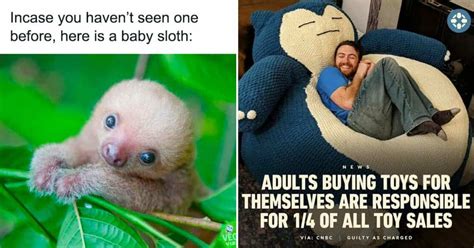
A domestic pig made an unexpected appearance at a goose’s private pool, resulting in a comical yet tense standoff captured on video and shared widely across social media platforms. The incident, showcasing the pig’s impromptu swim and the goose’s evident displeasure, has quickly become a viral sensation, highlighting the often-unpredictable interactions between different animal species.
The video, initially posted by a TikTok user identified as @roxy.the.vintage.pig, shows a pig named Roxy confidently wading into a small, above-ground pool typically used by a goose. The goose, clearly unimpressed by the porcine intrusion, maintains a watchful stance at the pool’s edge, occasionally honking in what appears to be a display of annoyance and territorial defense. The footage has garnered millions of views, sparking a wave of reactions ranging from amusement to empathy for the disgruntled goose.
“She was not happy I got in her pool today,” the caption of the video reads, confirming the observer’s interpretation of the goose’s behavior. This simple statement encapsulates the central dynamic of the encounter: an uninvited guest crashing a private party and the host’s unmistakable disapproval.
The video’s popularity underscores the internet’s fascination with animal antics and interspecies interactions. Such content often provides a lighthearted break from more serious news, offering viewers a chance to connect with the natural world through humorous and relatable scenarios. The incident also raises questions about animal behavior, territoriality, and the potential for conflict when different species share the same environment.
While the video primarily serves as entertainment, it also subtly touches on broader themes of animal rights and welfare. The goose’s reaction, though humorous, highlights the importance of respecting animals’ personal space and understanding their natural behaviors. The incident also prompts reflection on the responsibilities of pet owners to ensure their animals do not infringe on the well-being of other creatures.
Deeper Dive into the Viral Video
The viral video, which captured the attention of millions, presents a microcosm of interspecies dynamics within a domesticated setting. Roxy, the pig, appears to be a pet, evidenced by the TikTok user’s account dedicated to her life and adventures. The goose, although its specific ownership status isn’t clarified, seems to consider the pool its personal space, as shown by its defensive posture and vocalizations.
The pool itself becomes a focal point of the interaction. Above-ground pools are often used by domestic animals for cooling off and recreation, especially during warmer months. In this instance, the goose had likely established the pool as part of its territory, making Roxy’s uninvited swim a clear violation of its perceived boundaries.
Roxy’s behavior can be interpreted as a simple desire to cool off, driven by the instinctual need to regulate body temperature, especially common in pigs, who lack efficient sweat glands. However, the goose’s response underscores the importance of understanding animal territoriality. Geese are known to be protective of their space and can become aggressive when they feel threatened or that their territory is being invaded.
The video’s caption, “She was not happy I got in her pool today,” provides a direct insight into the situation from the perspective of Roxy’s owner. This acknowledgment of the goose’s displeasure humanizes the interaction, allowing viewers to empathize with both animals. It also suggests that the owner recognizes the importance of respecting the goose’s space, even when Roxy is simply trying to have fun.
The Broader Context: Animal Behavior and Territoriality
The “Oink-ward Encounter” offers a valuable glimpse into animal behavior, specifically the concepts of territoriality and interspecies interaction. Territoriality is a common behavior in the animal kingdom, where individuals or groups defend a specific area against intrusion from others. This behavior serves several purposes, including securing resources, protecting mates and offspring, and establishing social dominance.
Geese, in particular, are known for their strong territorial instincts. They often establish territories around nesting sites or feeding areas and will aggressively defend these areas against intruders, including other geese, humans, and, as this video shows, even pigs. Their defensive behaviors can include honking, hissing, wing-flapping, and even biting.
Pigs, on the other hand, are generally social animals but can also exhibit territorial behavior, especially in confined spaces. While they may not be as overtly aggressive as geese, they can still become protective of their food, sleeping areas, and personal space.
In the context of the video, the goose’s territorial behavior is clearly triggered by Roxy’s intrusion into the pool. The pool, likely perceived as part of the goose’s territory, becomes a source of conflict. The goose’s honking and watchful stance are clear signals of its displeasure and its attempt to assert its dominance over the space.
The incident also highlights the challenges of managing interspecies interactions in domesticated settings. When different species share the same environment, it is important to understand their respective behaviors and needs to minimize the potential for conflict. This can involve providing separate spaces for each species, implementing training programs, and carefully monitoring interactions to ensure the safety and well-being of all animals involved.
The Role of Social Media in Amplifying Animal Stories
The “Oink-ward Encounter” would likely have remained a local anecdote were it not for the power of social media. Platforms like TikTok have become increasingly popular for sharing animal videos, often generating millions of views and sparking global conversations.
The appeal of animal videos lies in their ability to evoke a range of emotions, from amusement and joy to empathy and concern. They offer a window into the natural world, allowing viewers to connect with animals on a personal level. They also provide a much-needed dose of levity and escapism in a world often dominated by serious news.
However, the viral nature of animal videos also raises ethical considerations. It is important to ensure that the animals featured in these videos are treated with respect and that their well-being is not compromised for the sake of entertainment. It is also crucial to avoid promoting harmful stereotypes or misrepresenting animal behavior.
In the case of the “Oink-ward Encounter,” the video appears to have been shared with good intentions, highlighting a humorous and relatable interaction between two animals. However, it is important to remember that behind every viral animal video is a real animal with its own needs and feelings.
Ethical Considerations and Animal Welfare
While the “Oink-ward Encounter” is largely perceived as a lighthearted event, it subtly raises ethical questions related to animal welfare and responsible pet ownership. The video prompts viewers to consider the potential stress experienced by the goose due to the unexpected intrusion.
The goose’s defensive posture and vocalizations clearly indicate its discomfort with Roxy’s presence in the pool. While the incident may appear comical, it is important to acknowledge that the goose may have experienced genuine anxiety or fear.
This highlights the importance of responsible pet ownership, which includes understanding the needs and behaviors of different animal species and taking steps to minimize the potential for conflict or stress. In this case, the pig owner might consider providing Roxy with her own pool or water source to reduce the likelihood of future intrusions into the goose’s territory.
Furthermore, the video underscores the need for greater awareness of animal territoriality. By understanding that animals often establish and defend territories, pet owners can take steps to create environments that respect these boundaries and minimize the potential for conflict. This can involve providing separate spaces for different species, implementing training programs, and carefully monitoring interactions to ensure the safety and well-being of all animals involved.
The Internet’s Fascination with Interspecies Interactions
The virality of the “Oink-ward Encounter” is a testament to the internet’s enduring fascination with interspecies interactions. Videos featuring unexpected friendships, playful encounters, and even comical conflicts between different animal species often capture the attention of millions of viewers.
This fascination stems from several factors. First, interspecies interactions often challenge our preconceived notions about the natural world. They demonstrate that animals are capable of forming complex relationships, even with members of different species.
Second, these interactions can be incredibly entertaining. The unexpected juxtaposition of different animal behaviors and personalities often leads to humorous and heartwarming moments.
Third, interspecies interactions can evoke a sense of wonder and connection to the natural world. They remind us that we are all part of a larger ecosystem and that animals, like humans, are capable of experiencing a wide range of emotions.
However, it is important to approach these videos with a critical eye. Not all interspecies interactions are positive or beneficial for the animals involved. In some cases, these interactions can be stressful or even harmful. It is crucial to ensure that the animals featured in these videos are treated with respect and that their well-being is not compromised for the sake of entertainment.
Frequently Asked Questions (FAQ)
1. What exactly happened in the viral video?
The video shows a pig named Roxy entering a small pool typically used by a goose. The goose appears visibly annoyed by the pig’s presence, honking and maintaining a defensive posture at the pool’s edge. The video, posted on TikTok, has garnered millions of views.
2. Why was the goose upset about the pig entering the pool?
Geese are territorial animals and often establish specific areas as their own. The goose likely considered the pool part of its territory and was upset by the pig’s uninvited intrusion. The honking and defensive posture displayed by the goose are typical signs of territorial behavior.
3. Was the pig harmed or at risk during the encounter?
Based on the available information and the video, the pig did not appear to be harmed or at risk. The goose’s behavior, while assertive, did not escalate to physical aggression. The situation appeared to be more of a comical standoff than a serious threat to either animal.
4. What does this video say about animal behavior?
The video illustrates the importance of understanding animal territoriality and interspecies interactions. It highlights how different species can react to each other in unexpected ways and underscores the need to respect animals’ personal space and boundaries. It also emphasizes the responsibility of pet owners to manage interactions between their animals to minimize potential conflicts.
5. What are the ethical considerations of sharing such videos on social media?
While the video is entertaining, it’s important to consider the potential stress experienced by the animals involved. Sharing such videos raises questions about whether animals are being exploited for entertainment and whether their well-being is being compromised. Responsible sharing involves ensuring that animals are treated with respect and that their needs are prioritized.
The Pig’s Perspective: Roxy’s Day Out
While the video focuses primarily on the goose’s reaction, it’s worth considering the experience from Roxy the pig’s perspective. Pigs, especially in domesticated settings, often seek out opportunities to cool off, particularly during warmer weather. Their lack of efficient sweat glands makes them susceptible to overheating, driving them to seek out water sources for relief.
Roxy’s decision to enter the pool was likely driven by this instinctual need to regulate her body temperature. She may not have fully understood the goose’s territorial claim on the pool, simply perceiving it as a refreshing oasis on a hot day.
From Roxy’s perspective, the encounter may have been a confusing and somewhat stressful experience. She likely sensed the goose’s displeasure, even if she didn’t fully comprehend the reason behind it. This highlights the importance of understanding animal communication and being able to interpret subtle cues that indicate stress or discomfort.
The Goose’s Territory: A Deeper Look
Understanding the goose’s territorial behavior requires a deeper look at its natural instincts and ecological role. Geese, as waterfowl, are naturally drawn to aquatic environments, which provide them with food, shelter, and protection from predators.
In a domesticated setting, a pool can serve as a substitute for a natural aquatic habitat, providing the goose with a safe and comfortable space to swim, preen, and engage in other natural behaviors. The goose may have established the pool as its primary territory, defending it against any perceived threats.
The goose’s territorial behavior is also influenced by its social status and breeding status. Geese are highly social animals, forming strong pair bonds and raising their young in close proximity to other members of their flock. A goose that is actively nesting or raising goslings will be particularly protective of its territory, as it needs to ensure the safety of its offspring.
The Human Element: Responsible Pet Ownership
The “Oink-ward Encounter” also underscores the importance of responsible pet ownership. Pet owners have a responsibility to understand the needs and behaviors of their animals and to create environments that minimize the potential for conflict or stress.
In this case, the pig owner could consider providing Roxy with her own pool or water source, separate from the goose’s pool, to reduce the likelihood of future intrusions. They could also implement training programs to teach Roxy to respect the goose’s space and boundaries.
Furthermore, the pet owner should be mindful of the potential stress experienced by the goose and take steps to minimize its exposure to situations that trigger its territorial behavior. This could involve creating separate outdoor spaces for the pig and the goose or carefully monitoring their interactions to ensure the safety and well-being of both animals.
The Impact of Domestication on Animal Behavior
The “Oink-ward Encounter” also raises questions about the impact of domestication on animal behavior. Domestication has significantly altered the behavior of many animal species, often suppressing certain natural instincts while enhancing others.
Pigs, for example, have been domesticated for thousands of years, resulting in changes in their social behavior, foraging habits, and reproductive patterns. Domestic pigs are generally more docile and less aggressive than their wild counterparts, but they still retain many of their natural instincts, including the need to wallow in mud and water to regulate their body temperature.
Geese have also been domesticated for centuries, primarily for their meat, eggs, and feathers. Domestic geese are generally less migratory and less territorial than their wild relatives, but they still retain their strong territorial instincts, particularly during the breeding season.
The “Oink-ward Encounter” highlights the challenges of managing domesticated animals in environments that do not fully meet their natural needs. It underscores the importance of understanding the impact of domestication on animal behavior and taking steps to create environments that allow animals to express their natural instincts in a safe and appropriate manner.
Beyond the Humor: A Reflection on Animal Rights
While the viral video is primarily viewed as a source of entertainment, it subtly touches on broader themes of animal rights and welfare. The goose’s reaction, though humorous, highlights the importance of respecting animals’ personal space and understanding their natural behaviors.
Animals, like humans, have a right to live in environments that meet their basic needs and allow them to express their natural instincts. They have a right to be free from unnecessary suffering and to be treated with respect and dignity.
The “Oink-ward Encounter” serves as a reminder that we have a responsibility to protect the rights and welfare of all animals, whether they are pets, livestock, or wildlife. This responsibility includes providing them with adequate food, shelter, and medical care, as well as creating environments that allow them to thrive and express their natural behaviors.
The Future of Animal Videos: Trends and Ethical Considerations
The “Oink-ward Encounter” is just one example of the many animal videos that go viral on social media every day. The trend of sharing animal videos is likely to continue, as these videos provide a much-needed dose of levity and escapism in a world often dominated by serious news.
However, as the popularity of animal videos continues to grow, it is important to address the ethical considerations associated with their creation and dissemination. We need to ensure that the animals featured in these videos are treated with respect and that their well-being is not compromised for the sake of entertainment.
This requires a collaborative effort involving social media platforms, content creators, animal welfare organizations, and viewers. Social media platforms need to implement policies that prohibit the sharing of videos that depict animal abuse or exploitation. Content creators need to be mindful of the potential impact of their videos on animal welfare and take steps to ensure that their content is ethical and responsible. Animal welfare organizations need to provide guidance and education on responsible animal handling and filming practices. And viewers need to be critical consumers of animal videos, questioning the authenticity and ethical implications of the content they are viewing.
By working together, we can ensure that the future of animal videos is one that celebrates the beauty and wonder of the natural world while protecting the rights and welfare of all animals.









